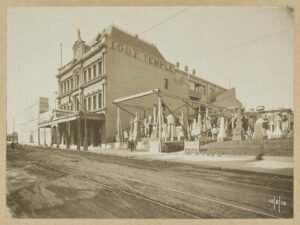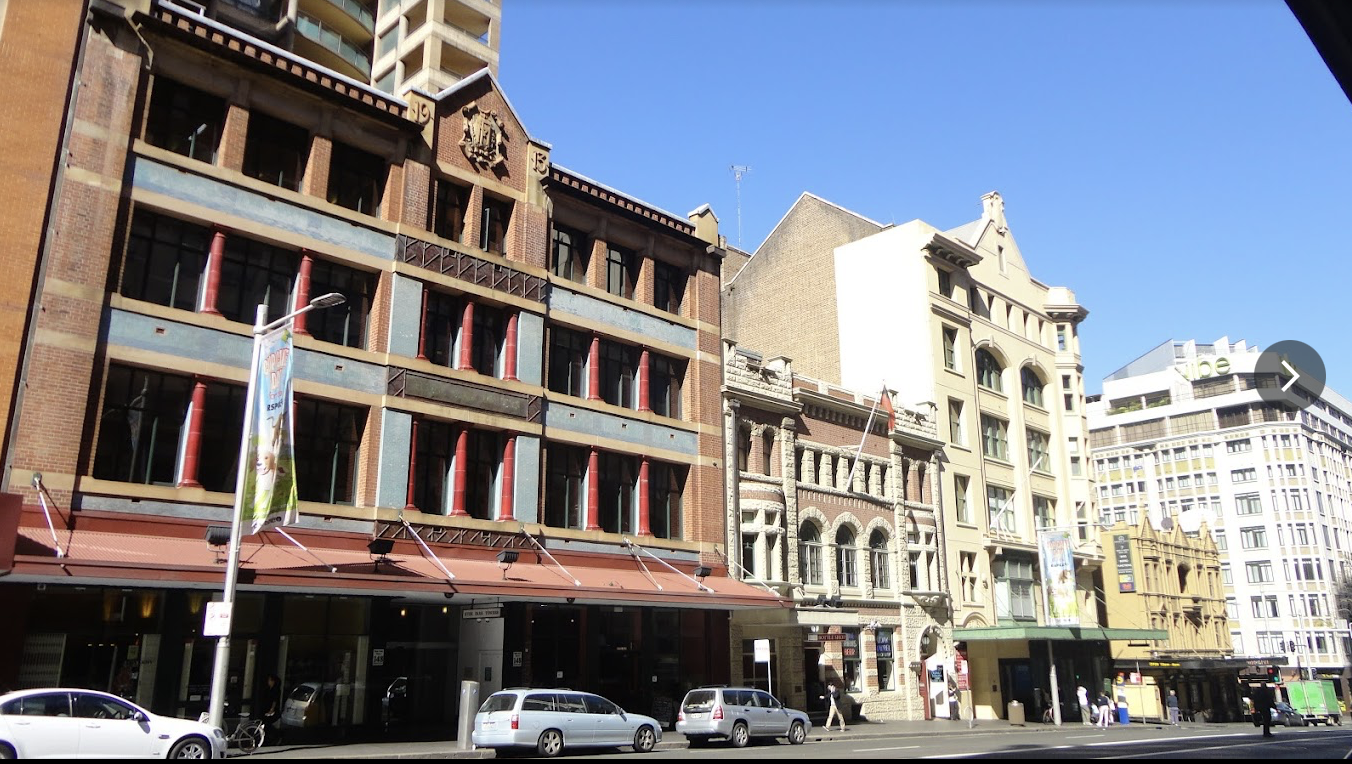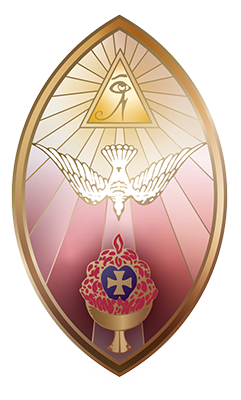
The Independent Order of Odd Fellows (IOOF) Building in Sydney holds a special place in the history of Ordo Templi Orientis in Australia. This historic location was not only a meeting place for various esoteric and fraternal organizations but also played a crucial role in the early growth of OTO in the country.
During the early 20th century, the IOOF Temple at 138 Elizabeth Street, Sydney, became a key site for Thelemic activity. Monthly OTO meetings and initiations were held there, and Frank Bennett, pioneer for Thelema in Australia, delivered weekly lectures on Thelemic philosophy. It was also here in 1915 that the original Australian OTO Lodge charter was co-signed by Frank Bennett and Veni Cooper-Mathieson, marking a pivotal moment in the establishment of OTO in Australia.

New Thought and IOOF Temple
One of the most intriguing figures associated with the IOOF Temple was Veni Cooper-Mathieson (see previous articles on this site). Returning to Australia after a stint in the US, Veni settled in Sydney and based her publication, “The Revealer,” out of “The Truth Centre” within the IOOF Temple. Initially influenced by New Thought teachings, her encounter with the OTO at the IOOF Temple marked a significant shift in her spiritual path. She embraced aspects of Thelemic mysticism, incorporating them into her broad teachings on spiritual liberation. Her co-signing of the original Australian OTO Lodge charter in 1915 alongside Bennett solidified her role in early Australian Thelemic history. This period saw the integration of Thelemic philosophy with other metaphysical teachings, contributing to the unique esoteric environment that flourished within the IOOF Building.
A brief history.
The IOOF Building, located at 136-138 Elizabeth Street, Sydney, was positioned in a key area of urban development. A historic view of the site captures an unsealed Elizabeth Street, complete with tram tracks, providing a glimpse into early 20th-century Sydney. To the left of the building was a business advertising Fry’s Cocoa, located at the corner of Liverpool Street. To the right, at 140-146 Elizabeth Street, stood the yard of Andrews Brothers Monumental Masons, reflecting the mix of commercial and social infrastructure in the area. The widening of Elizabeth Street was a documented urban project that further shaped the surroundings of the IOOF Temple and Chamber.
The Independent Order of Odd Fellows (IOOF) was a global fraternal organization with roots in England, dedicated to charity, mutual aid, and moral upliftment. The IOOF Building in Darlinghurst served as a meeting space for Sydney’s Odd Fellows, who, much like the Freemasons, conducted initiation rituals and upheld traditions emphasizing fraternity and ethical conduct. Their lodges, including this one, played an essential role in community support, offering financial aid and social networking to members in need.
Other Groups That Used the Building
The IOOF Building was not exclusive to the Odd Fellows. Over the years, a variety of organizations with esoteric, ritualistic, or fraternal leanings occupied the space, including:
Freemasons
Though primarily associated with their own lodges, Freemasons sometimes held meetings in the IOOF Building.
Rosicrucian Orders
Certain Rosicrucian groups, influenced by Western esotericism and mystical Christianity, held meetings or lectures within the building. Veni was actively involved in these groups at the time of her meeting with Frank Bennett.
Theosophical and Occult Study Groups
During the late 19th and early 20th centuries, Sydney experienced a surge in interest in Theosophy and other occult philosophies. The IOOF Building hosted hundreds of public lectures and private study groups connected to Madame Blavatsky’s Theosophical Society.
Political and Union Meetings
While primarily a space for esoteric and fraternal groups, the IOOF Building also served as a venue for various labour unions and political meetings. Many fraternal orders of the time had strong ties to workers’ rights movements, advocating for better wages and working conditions. The communal and secretive nature of the IOOF made it an attractive meeting place for early Australian labour organizers.
The IOOF Building Today
Like many historic fraternal lodges, the IOOF Building has changed drastically since its early days. While it no longer serves as a hub for secret societies and esoteric gatherings, it has been repurposed for contemporary use. Today, the building is a mix of office spaces and event venues, with only a few sections retaining their historic architectural charm.
The transformation of the IOOF Building mirrors the broader decline of traditional fraternal societies in the 20th century. As social structures changed and the necessity for mutual aid organizations diminished with government welfare programs, many lodges either disbanded or adapted to modern functions. In short, people became more likely to turn to the State for welfare and support than the mutual aid assured and encouraged by fraternal groups.
The IOOF Building in Sydney stands as a testament to the rich history of fraternal and esoteric traditions in Sydney. For the OTO in Australia, it represents a foundational site where early Thelemites laid the groundwork for the future of both OTO and A∴A∴ in Australia.

